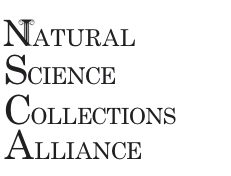The White House Office of Science and Technology Policy (OSTP) and the White House Office of Management and Budget (OMB) issued their annual science and technology (S&T) priorities memorandum on August 27. The document guides federal agency priority-setting in the coming budget cycle. The directive identifies pandemic readiness and prevention, climate change action, national security and economic resilience, improving diversity and equity, and innovation in new technologies as priorities for the fiscal year (FY) 2023 budget.
The Administration’s memo asserts that federal R&D funding is essential to maximize the benefits of science and technology to tackle the climate crisis and advance health, prosperity, security, environmental quality, equity, and justice for all Americans. The guidance calls for continued investments in R&D, STEM education and workforce development, commercialization, and research infrastructure, with emphasis on Historically Black Colleges and Universities, other Minority Serving Institutions, and disadvantaged communities. Furthermore, it directs agencies to ensure that R&D results are made available to other scientists, the public, as well as innovators and that R&D investments create products that are made in the U.S. by U.S. workers.
On public health, the memo stresses the need for the federal government to be prepared for the next pandemic and directs agencies to build the data infrastructure, manufacturing and delivery capabilities, and workforce needed to support rapid and scalable public health response both domestically and globally, and funding the fundamental science and critical technologies needed to fulfill the Administration’s goals in pandemic readiness.
According to the memo, the climate crisis is interconnected with the staggering levels of biodiversity loss occurring across the globe because climate change is exacerbating the impacts that other drivers are having on biodiversity. The Administration’s climate priorities include advancing the science that improves the understanding of Earth’s changing climate and its risk to society; spurring innovations in clean energy technologies and infrastructure; pursuing nature-based solutions for mitigation and adaptation; improving climate adaptation and resilience through integration of physical, natural, and social sciences; and increasing monitoring of greenhouse gas emissions.
Catalyzing research and innovation in critical and emerging technologies, such as artificial intelligence, quantum information science, biotechnology, advanced communications technologies, and microelectronics, is an R&D priority that is in line with the Trump Administration’s emphasis on the Industries of the Future. Another focus area for the Administration is innovation for equity. The memo states that agencies should prioritize R&D investments in programs with strong potential to advance equity for all, including people of color and others who have been historically disadvantaged, marginalized, and adversely affected by persistent poverty and inequality.
To build public trust in the U.S. S&T enterprise, the White House directive calls on agencies to prioritize making federally funded R&D open to the public in a findable, accessible, interoperable, and reusable way; more rigorous, reproducible, and transparent; safe and secure; grounded in assessment of ethical, legal, and societal implications; and free from improper political interference all while minimizing administrative burden.
The bioeconomy and scientific collections, which featured as R&D budget priorities during the Trump Administration, were not included in the guidance for 2023.

